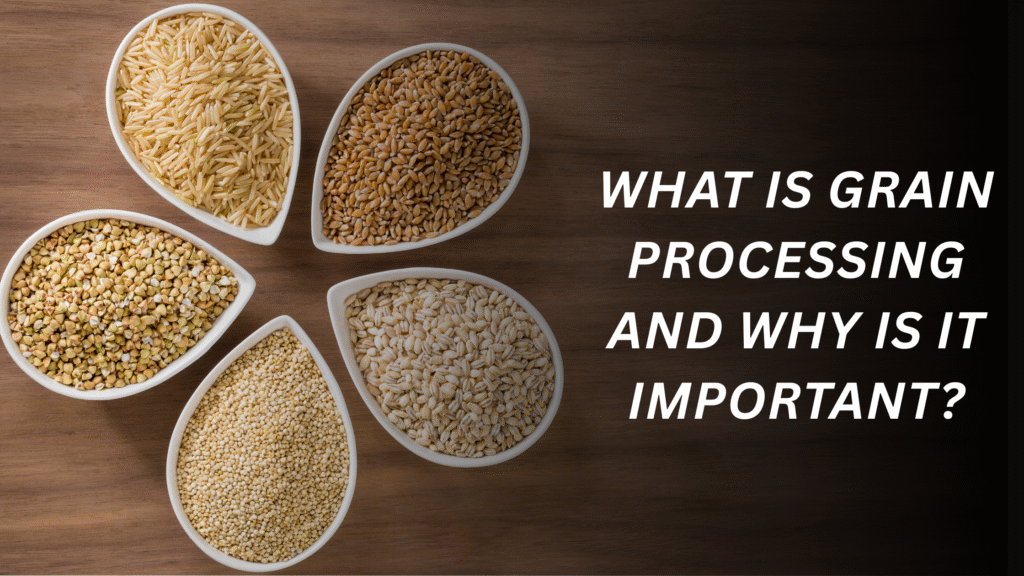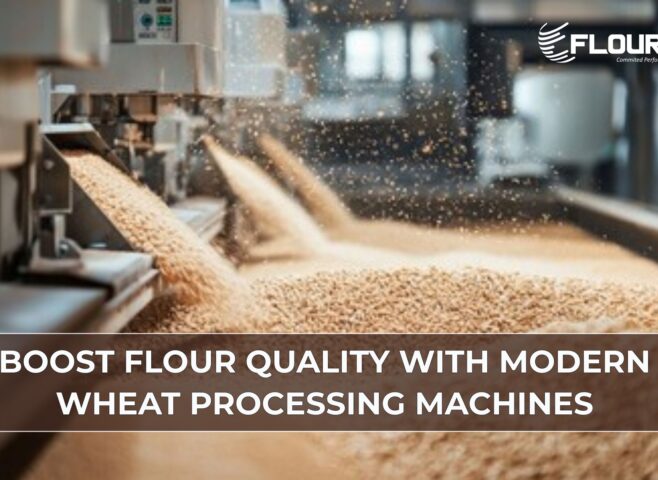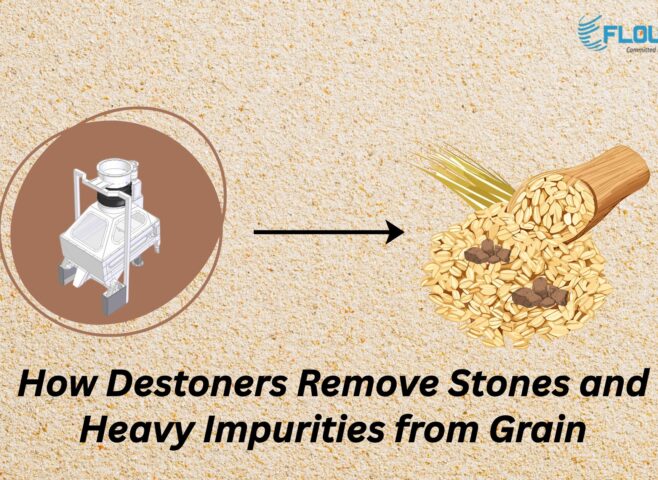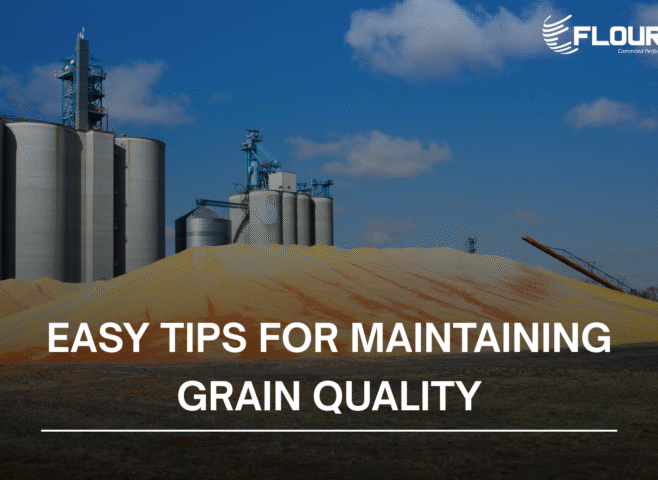When we sit and eat food on our plates, we hardly ever even think about how long it takes to get to the kitchen. Grains such as wheat, rice, corn, and barley are major staples of diets worldwide, but they are not produced for eating when harvested from the ground. That’s why a grain processing plant plays a crucial role. Grain processing is the process of cleaning, conditioning, milling, and refining raw grains to make them edible, safe, and appropriate for use. It not only gives quality food but also increases shelf life, nutritional content, and marketability.

This blog will explore the real definition of grain processing, its processes, and the rationale behind its being so important to global food systems.
Understanding Grain Processing
At its core, grain processing is about converting raw harvested grains into consumable products. The process typically involves:
- Cleaning: Sweeping away dust, stones, husks, and foreign particles.
- Conditioning: Synchronize moisture levels to change grains ready to be milled.
- Milling: Grinding the grains into flour, semolina, or other fine particles.
- Refining: Debushing or polishing grains to the required product.
Producers order each process to preserve food safety and maximize the use of the grain. For example, they process wheat kernels into bran, germ, and endosperm to produce high-quality flour. Similarly, they mill paddy rice into white or brown rice to meet market demand—use these processed grains today for better results.
Why is Grain Processing Important?
Grain processing is not just about turning wheat into flour or rice into edible form. Its substance extends much further:
- Improves Food Safety
Raw grains tend to have impurities, microorganisms, or even toxic substances. Processing removes these impurities before use. This minimizes health threats and is in line with global food safety practices. - Enhances Nutritional Value
Most processing actions are aimed at preserving or even enhancing the nutritional value of grains. For example, fortification during milling requires the addition of vital vitamins and minerals, meaning individuals will receive balanced nutrition. - Boosts Shelf Life
Unprocessed grains are responsible for spoilage, insect damage, or fungus. Processing techniques such as polishing, dehusking, and drying make them more stable, thus having a long shelf life. This makes grains more convenient to store and transport. - Supports Global Food Supply
Predictions show the global population will exceed 9 billion by 2050. Efficient grain processing must meet this growing food demand. Processing for own farmers and producers to deliver large volumes without sacrificing quality. - Encourages Economic Growth
Grain processing factories create employment and produce value-added goods that sustain economies. Through the processing of raw grains into flour, cereals, and packaged foods, they generate much revenue for the food industry.
Types of Grain Processing
Grain processing depends on the nature of the grain as well as on its usage. Common processes include:
- Wheat Processing: Yields bread, pasta, and bakery flours.
- Rice Processing: Comprises dehusking and polishing to form brown or white rice.
- Corn Processing: Utilized to make cornmeal, starch, syrup, and even ethanol.
- Barley & Oats Processing: Utilized to make cereals, animal feed, or malt for brewing.
Every grain is a bit of a process, but it’s always the same objective—safe, healthy, and ready-to-use products.
Innovations in Grain Processing
Technology is re-making grain processing facilities into extremely efficient, eco-friendly operations. Some of the recent innovations are:
- Automation: Instruments now track grain quality in real time.
- Energy-Efficient Systems: Facilities are saving on power while optimizing yield.
- Waste Utilization: By-products such as husk and bran are reused for feed or energy, reducing waste.
- Fortification Programs: Nutrients are supplemented during processing to combat malnutrition.
These advances not only increase the speed of processing but also render it more sustainable in the long term.
Challenges in Grain Processing
Although crucial, grain processing is challenged in several ways:
- Quality across huge quantities: Stability in global supply chains can prove difficult.
- Balancing Nutrition & Consumer Preference: Chaser tends to prefer polished grains, though whole grains are healthier.
- Sustainability Issues: High energy use and too much waste are major concerns.
- Market Pressures: Changing grain prices can affect the cost of processing.
Solving all of these problems needs continuous innovation and cooperation among farmers, manufacturers, and suppliers of technology.
The Role of a Grain Processing Plant
A contemporary grain processing facility uses sophisticated equipment to guarantee efficiency, accuracy, and mass production. Such facilities are capable of processing tons of grain within a day while consistently retaining the quality. Their significance is in various aspects:
- Food Safety: High-tech cleaning and sorting machines remove contaminants.
- Consistency: Automated processes provide uniform grain size, texture, and quality.
- Scalability: Plants serve the increasing global demand for processed grains.
- Value Addition: Bran and husk are utilized in animal feed or as biofuel.
It would be impossible to meet the mass requirements of bakeries, food producers, and households globally without such plants
The Future of Grain Processing
The future of grain processing looks bright, encouraged by technology and world demand. Through the use of automation-driven quality inspections, green machinery, and biofortification techniques, the industry is heading toward more sustainable and healthier results. Grain processing facilities of the future will probably centralize on waste reduction, the use of renewable power, and healthier final products for consumers.
Conclusion
Grain processing is not an industrial practice—it’s the foundation of the world food chain. By maintaining food safety and nutrition, and meets the requirements of billions of individuals, it plays a critical part in designing our diets and economies. Central to this change, a grain processing plant that changes raw harvests into quality, dependable food items. Contact Flourtech Engineers today to design your own modern grain processing plant and increase your production efficiency.



